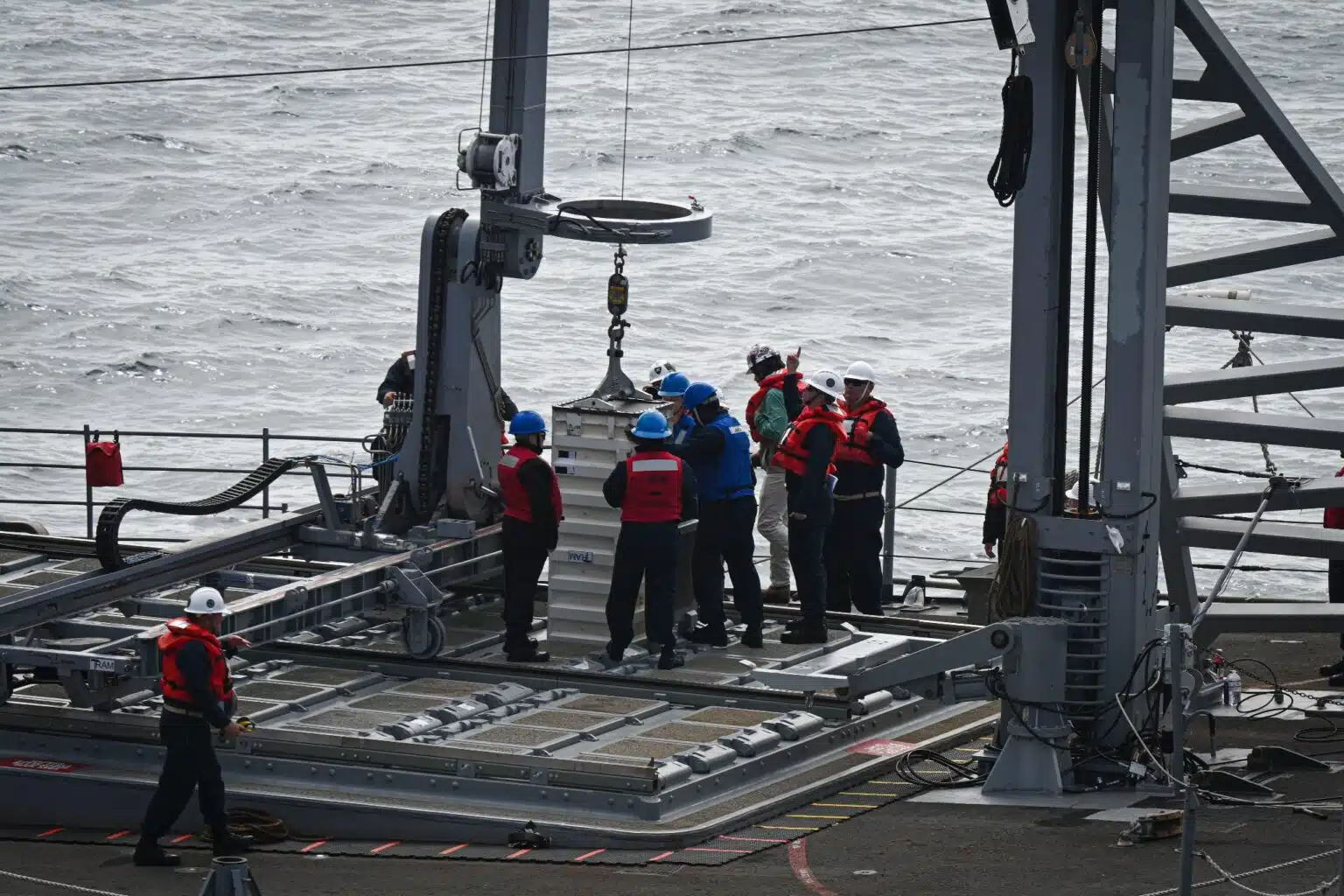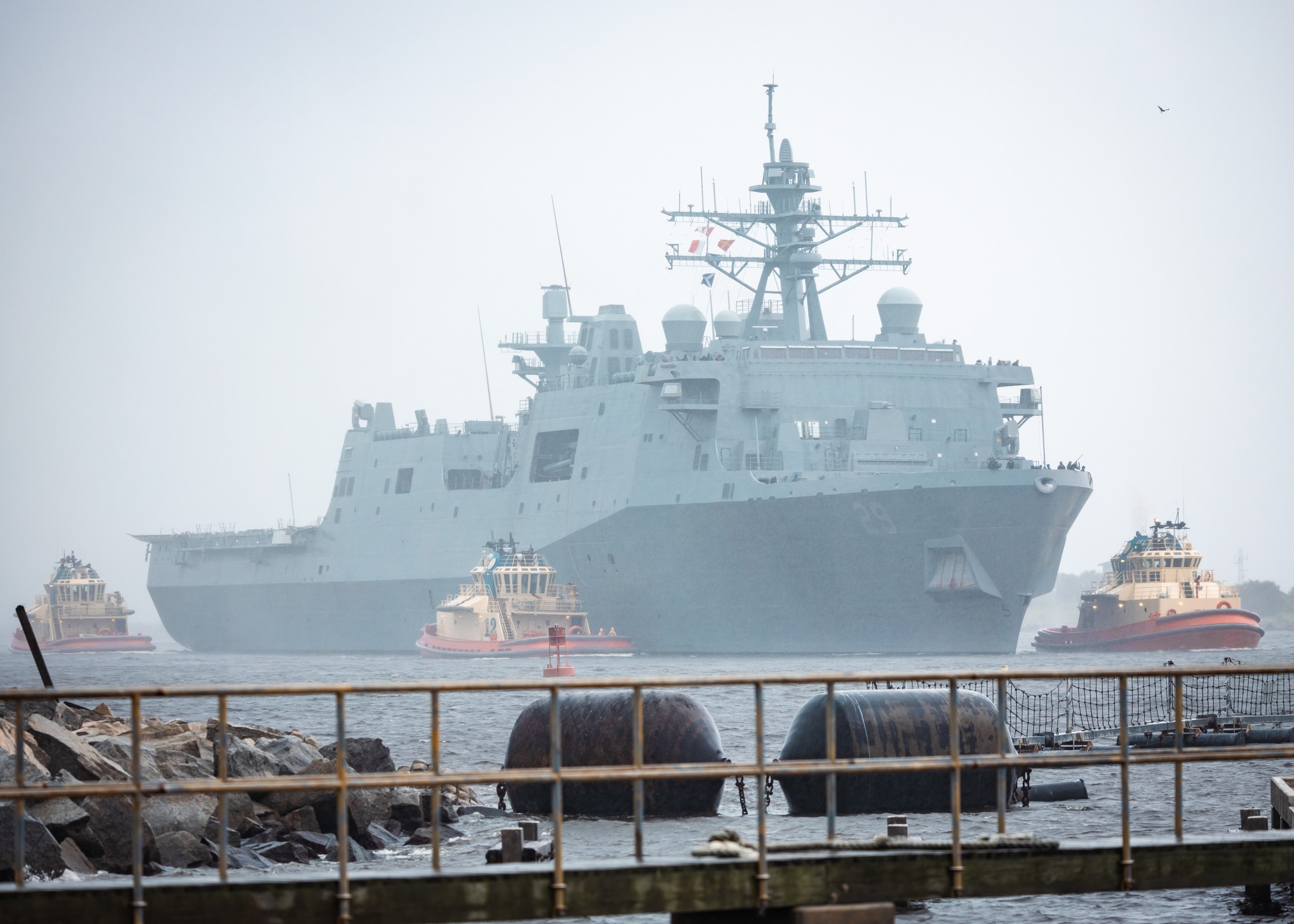The US tests a new missile reloading mechanism for the fleet
13 October, 2024 The Ticonderoga-class guided-missile cruiser USS Chosin (CG 65) steams alongside the Lewis and Clark-class dry cargo ship USNS Washington Chambers (T-AKE 11) during a demonstration of the TRAM method of reloading at sea. Photo credits: US Navy The U.S.
Navy has conducted the first test of a new vertical launcher reloading mechanism. It will allow ships to reload missiles while at sea. Naval News reported on this.
According to the Department, this will "change the rules of the game" and allow warships to continue combat operations without having to return to port. The ships USS Chosin (CG-65) and USNS Washington Chambers (T-AKE 11) conducted tests off the coast of San Diego on October 11, 2024. During the test, an empty missile launch container was loaded into a Ticonderoga-class cruiser's Mk.41 vertical launching systems using the Transferrable Rearming Mechanism (TRAM).
 Sailors on USS Chosin (CG-65) load a Mk.41 cell during an underway replenishment demonstration of the Transferrable Rearming Mechanism.
Sailors on USS Chosin (CG-65) load a Mk.41 cell during an underway replenishment demonstration of the Transferrable Rearming Mechanism.
Photo from Carlos Del Toro, Secretary of the Navy
According to a press release from the Naval Sea Systems Command, TRAM was designed so that a warship can not only reload missiles but also refuel and replenish supplies simultaneously. Carlos Del Toro, Secretary of the Navy, called the development of TRAM a priority. He emphasized its necessity and the progress made since the beginning of 2023.
He also said that the Navy intends to put TRAM into service in 2026 or 2027. "Deploying TRAM into the Military Sealift Command logistics fleet would enable combatants to remain in theater while reloading their VLS missile launchers instead of having to travel long distances to a port, greatly expanding the volume and tempo of long-range fires - and the U.S. Navy's advantage over adversaries," Tim Barnard, director of U.S.
Naval Sea Systems Command, stated. The US military is increasingly concerned about its ability to reload and sustain combat operations without US naval bases or friendly facilities. This is happening amid the confrontation in the Red Sea and possible contingencies in the Indo-Pacific region.
Tim Barnard notes that in the Western Pacific, many U.S. naval bases are within range of Chinese long-range missiles. This could make it impossible to use them to replenish missile stocks and repair warships during a conflict. Meanwhile, the bases not under active threat are located outside the theater of operations.
At the end of September 2024, the US Navy accepted the delivery of the new San Antonio-class amphibious transport dock Richard M. McCool, Jr.
 Amphibious Transport Dock Richard M. McCool, Jr. (LPD 29) of the San Antonio class of the US Navy.
Amphibious Transport Dock Richard M. McCool, Jr. (LPD 29) of the San Antonio class of the US Navy.
September 2024. Photo credits: U.S. Navy
The main task of such ships is to deliver and land marines and heavy equipment.
They also support expeditionary operations both at sea and in coastal areas.